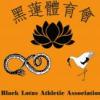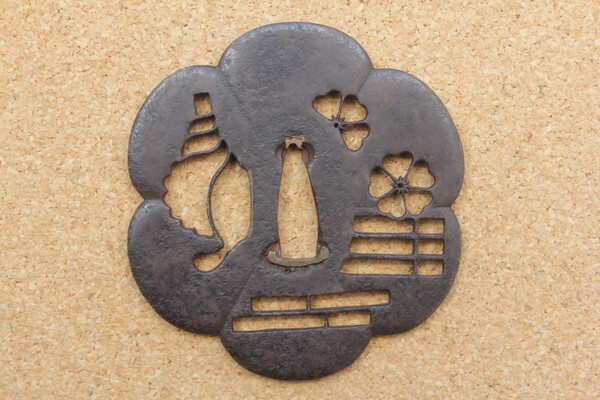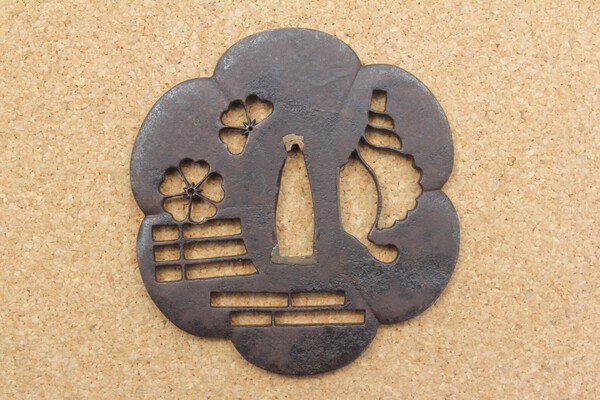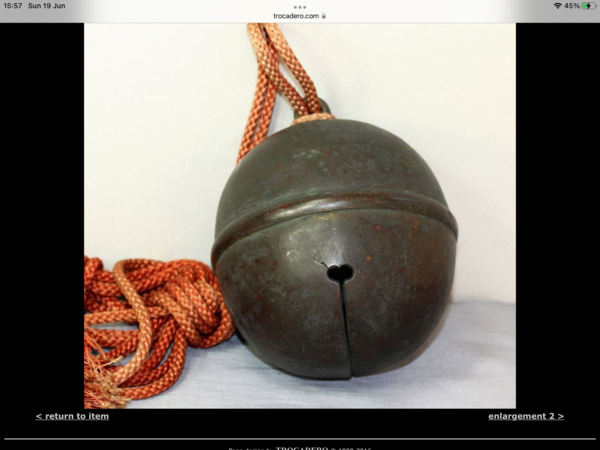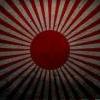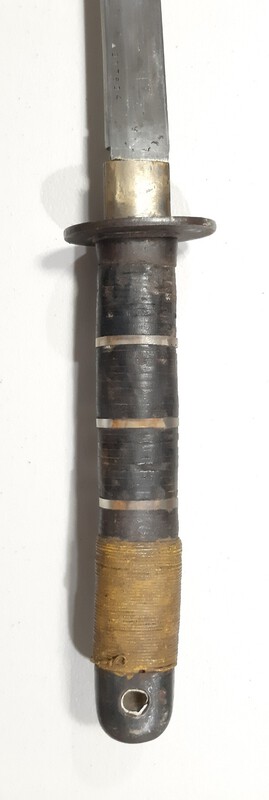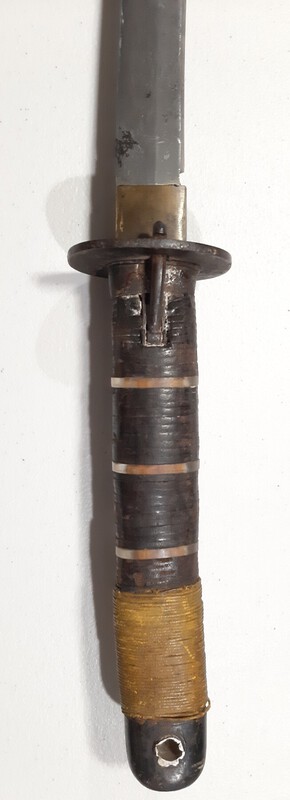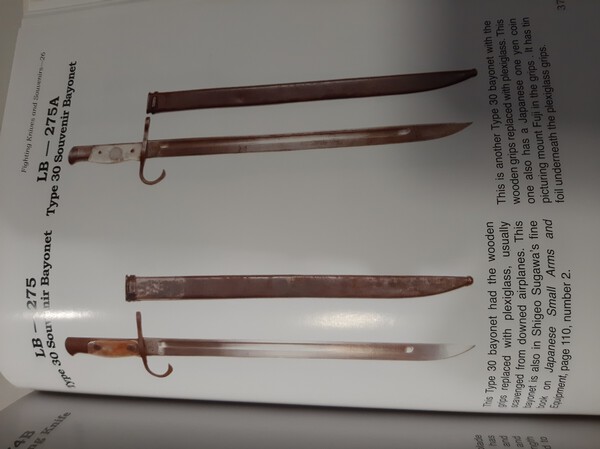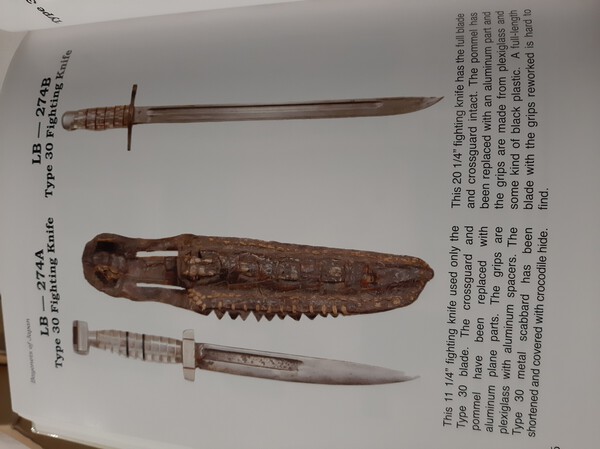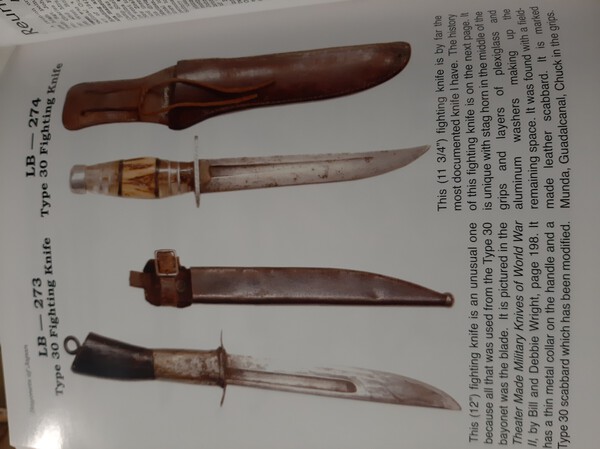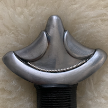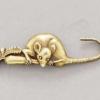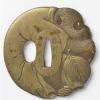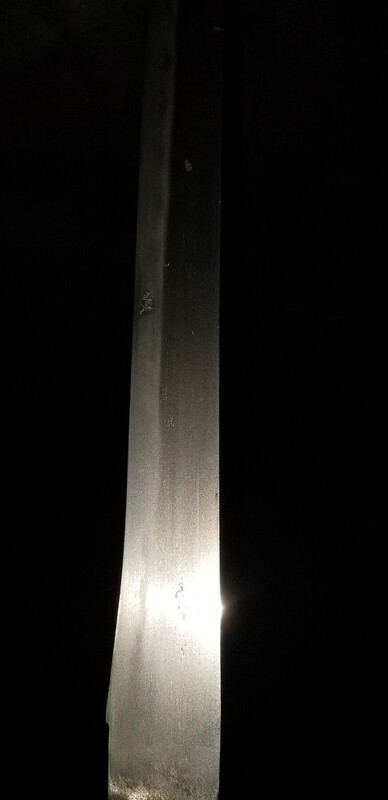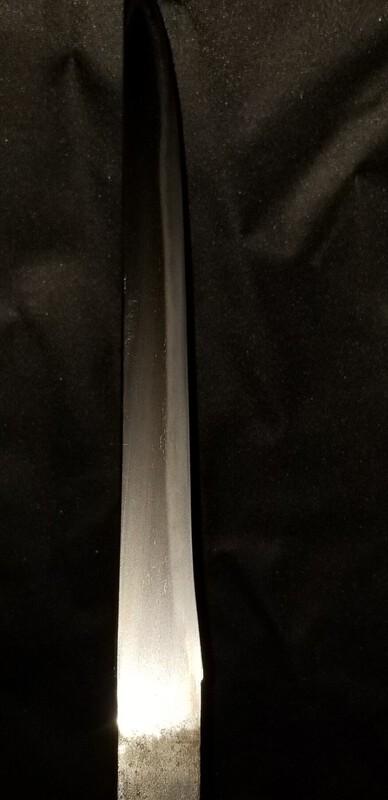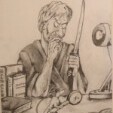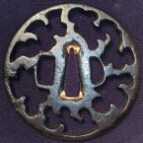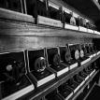Leaderboard
Popular Content
Showing content with the highest reputation on 06/19/2022 in all areas
-
Unfortunately this is a chinese made fake or reproduction, the signature is probably gibberish. Best to get your money back if you were after a real Japanese sword.5 points
-
I'm using this post as an opportunity to share a picture of my contribution. The original template for this piece is probably an Akasaka Tsuba. The flowing design represents a Waka poem from the Kokon Waka Shu 古今和歌集: ほのぼのと明石のうら朝ぎりの島かくれゆくふねをしぞおもふ "In the bay, of Akashi, when the day is drawing to an end, my thoughts follow a boat which disappears behind an island in the mist." Thanks Christoph3 points
-
3 points
-
Here's a auction buy that comes from a mega collectors estate that is being parceled out. A NMB member did the write up for the piece and attributed it to Sukeyoshi, do you agree? Blade was pretty dirty when it came in but shows some detail after clean up and in a nice morning son. Really nice early family blade that in all likehood saw Port Arthur or the Tsushima straight waters2 points
-
2 points
-
As stated at the top: https://nbsk-jp.org/wp-content/uploads/2022/05/12_e.pdf Congrats to the non-natives that did quite well: Tosogu: Ford Hallam - Gold Prize (2nd place) Jeff Broderick - Bronze Prize (2nd place) Christoph Kopp - Nyusen(Recognition prize) Saya-nuri: Michael Cummins - Nyusen(Recognition prize)1 point
-
1 point
-
1 point
-
Here is my 95 with a leather and plexiglass tsuka. "The plexiglass handle, to me, is completely post-war Bubba work." This sort of modification was not unusual for captured, bladed weapons. It falls into the same category as naval knot-work, repainting, plaques, exotic covers for scabbard etc. Can't say for certain that this particular example is one such, but I'm reasonably confident to say it very likely is. Here are some photos I've taken of similar examples from LeBar's excellent book on Japanese bayonets. As a side note, there are souvaneer bayonets with repainted scabbards (sheaths?). They grey ones, for example, are a perfect match to the couple of grey 95 scabbards posted in another thread and I imagine the link between these is the same - done by servicemen at the end of the war. They are not some kind of rare varieties of camouflage or a means to denote a military branch. The examples with several different colours on various parts also look similar to a few of the more colourful and unusual combinations we have seen on 95s. Probably some are from that (just)post-war period.1 point
-
For the nakago I'd use soft tissue or even a non abrasive cloth. Maybe with isopropyl or none at all. I personally don't find the nakago a challenge to remove oil. Few people don't even oil the nakago. In koshiare unless you have a specially made cabinet or glass which can keep out moisture and maintain humidity levels. Some people use dehumidifier in glass cabinets to display. Has the blade been recently polished? Im gathering not . Then it should be fine it's original koshiare, newspapers can also be used for the blade until you get a shirasaya. I'm gathering the blade came in koshiare. So that's fine. The only time I think placing a blade into koshiare is an issue is when you have a newly polished blade which hasn't been in its original koshiare for a while, and dust , debris, are left in the saya. I never oil tsuba. Personally Yes I beleive few people here use isopropyl to remove oil with either microfiber or normal cloth. I personally use uchiko, as I have no problem with it. Everyone has their own way of doing so. The trick is not to over oil the blade, and remove excess with another wipe of tissue or cloth. This stops beading or oil stains. You get better as time goes on. Regards1 point
-
I'd admired a tsuba from the Birmingham museum and fortunately met a UK tsuba maker He showed me one of his tsuba and I asked him to make a copy of the Birmingham Long story short: It arrived a few weeks ago and I was stunned at the result (attached) I've not taken proper pictures yet and these are just quick snaps Due to various personal circumstances he is no longer taking on any commission work I hope you like it as much as I do PS. The tsuba is made from 14C German horseshoes NMB.pdf!1 point
-
John is right. Just for completeness, the signature reads: 地井武男 = Chii Takeo Chinese fakes often come with random Japanese names inscribed on the tang.1 point
-
1 point
-
1 point
-
Okan, in the first blade I can only read KUNI, the second MEI might be KANESUKE or KANENORI. Both NAKAGO look as if they had been cleaned (= Patina stripped) which is very bad1 point
-
I agree with the sengoku mino opinion. Late muromachi sugata with saki sori and a togari gunome hamon. A lot of mino swords were made too so it would be one of the more common blades to encounter. It reminds me of a sue-seki I once owned. Also it’s not a gunto. Civilian koshirae that was never converted to gunto use. In all honesty they seem newer to my eyes than the pre surrender showa examples I have.1 point
-
1 point
-
this has nothing in common with anthing Japanese imho. just junk1 point
-
Thank you John and Colin. This is all grist to the mill. Step by step one gets to Rome.1 point
-
I’m sure Ford (hi again Ford…long time!) will tell us more but from my experiences in Japanese Meiji metalwork (and as I’m sure you all already know) the Japanese were masters of creating alloys where even the smallest variation in their compositions can create a vast range of different colour nuances when put through the same patination processes. Given that Meiji metalworkers inherited most of their skills and knowledge from sword fitting makers it is reasonable to assume the “soft metal” tsuba etc makers utilised nearly the same variety of alloys. I guess the only way to be sure is to have it analysed by one of those “magic scanner guns” that can accurately measure the metallic element composition. The tsuba under debate could be an alloy that I have often seen called Sentoku. The surface looks as if it may have been created using an etching technique and it may have lost its original patina which causes further confusion! Just my thoughts.1 point
-
I can't reconcile the brassiness' of the hex tsuba, however the fact that shinchu is copper and zinc and yamagane is arsenous, lead or antimony with copper seems perfectly succinct, as in brass and bronze being different.. John1 point
-
1 point
-
1 point
-
studied for the better part of thirty years, nurtured relationships with a number of good dealers and eventually sold the bulk of what I had already collected to pay for it. That's now about 10 years ago and despite having to sell some pieces I liked a great deal I have never regretted doing it.1 point
-
Dear Jace. A large shinshinto katana with an o gissaki in nice original mounts, spotted many years ago as I was cycling past an antiques shop I knew. Groaned and pulled over on the basis of, "Well at least I can have a look!" Went in and drew the blade out a little to see a sticker, yes, on the blade, which said £30. Force of habit more than anything else, I asked if there was anything they could do on that and to my surprise the owner said he could do it for £28. With trembling hands I wrote the cheque, knowing that it would make me over drawn, first and last time for that. Next problem was cycling home with it. I still have it, papered now to Inshu Kanesaki. Iron mokko tsuba, gold foiled habaki and seppa, shakudo fuchi kashira and menuki of samurai fighting in boats. All the best.1 point
-
David, I was simply suggesting that it might NOT be treated as unsalvagable junk in Japan. It certainly would not be "confiscated" but I think it could be registered. A polish would be so expensive that it might not be "wise", but I expect that it would be possible. These things happened. Peter1 point
-
My first thought was that it is an owl. Owls are quite rare in Japanese fittings.1 point
-
Congrats on the start of your new addiction The steel should clean up fairly well with some scraping with antler or ivory. It will even out the appearance of the steel surface once you get those tiny rust bubbles off the surface. Don't use any metal wire brushes of any kind or you'll scratch through the patina that that gives it an aged appearance. Also make sure not to scrape the gold overlay with anything or you'll take it right off.1 point
-
Spartancrest/ Dale said 'good luck in your collecting- no one ever stops at one'. So true. The addiction is a little akin to other readily available drugs like alcohol and nicotine. More fun and pleasurable though. Roger j1 point
-
I agree with all Dale has said. For a first Tsuba it is not the worst you could do. Every guard you buy is another piece of valuable information towards your learning. You may or may not hold on to this guard, but anything you learn from it will transfer to the next piece. Helping you in your decision of the next acquisition and further maintenance. You have a starting point to your collection, keep us updated to where your collection heads.1 point
-
Xander, I think late Edo, two tones of gold nunome-zogan (布目象嵌) for the most part in good condition [nunome is one of the easiest decoration types to damage]- it has a faint seppa shadow so it was likely mounted for some time. The patina looks a bit patchy but that might be the lighting - entry level guard but better than my first and I am sure this is true of a lot of collectors. When you post could you include the size? It looks Wakizashi size (脇差) to me but not sure. [how big are your hands?] You can always ask before the next guard you go for - with the caveat that you may be advertising your find to someone with more money in their pocket, don't include any links to auctions that have not finished, images are safer. [links after the fact are ok.] Good luck in your collecting - no one ever stops at one!1 point
-
Below is a link to a gentleman that worked at the 凌霜堂軍刀店 that fitted your sword out. He was 99 years old as of 2015! http://www.kenoh.com/2015/09/05_chasing.html1 point
-
0 points

